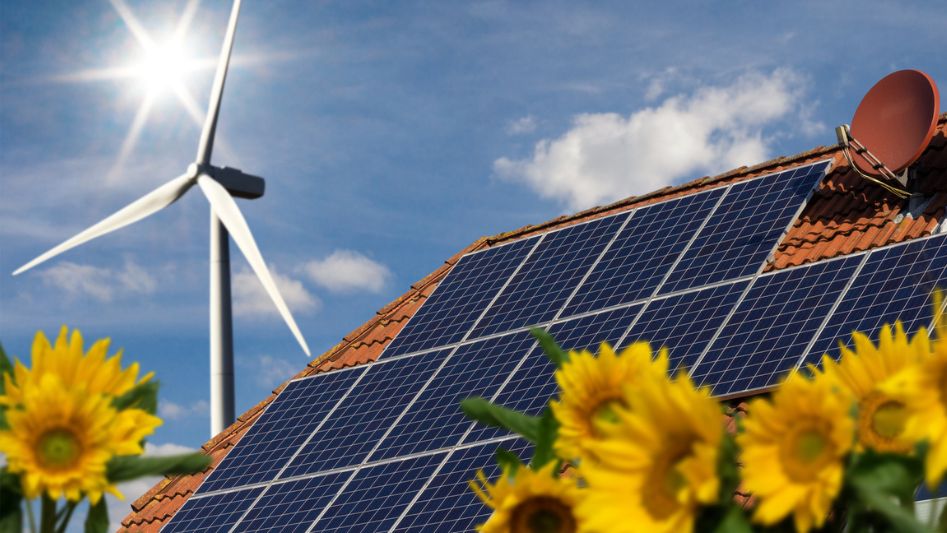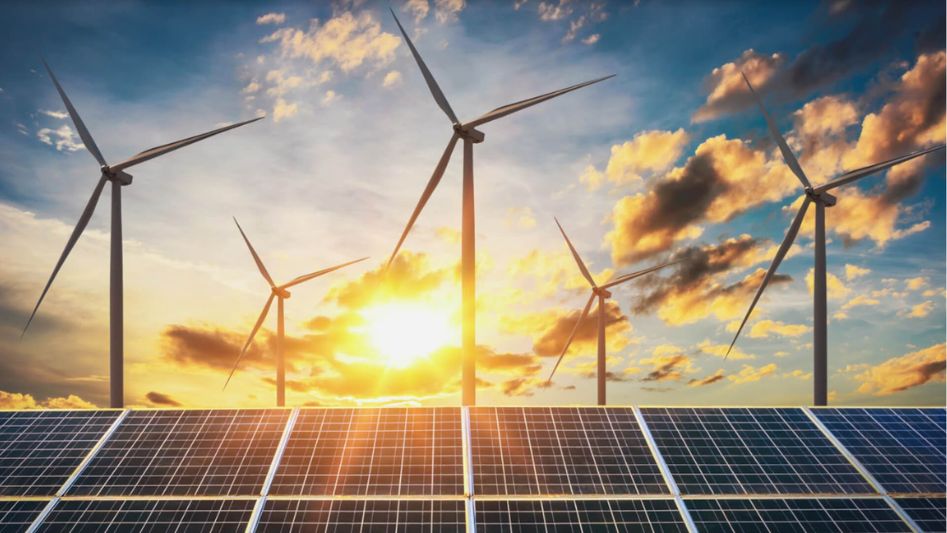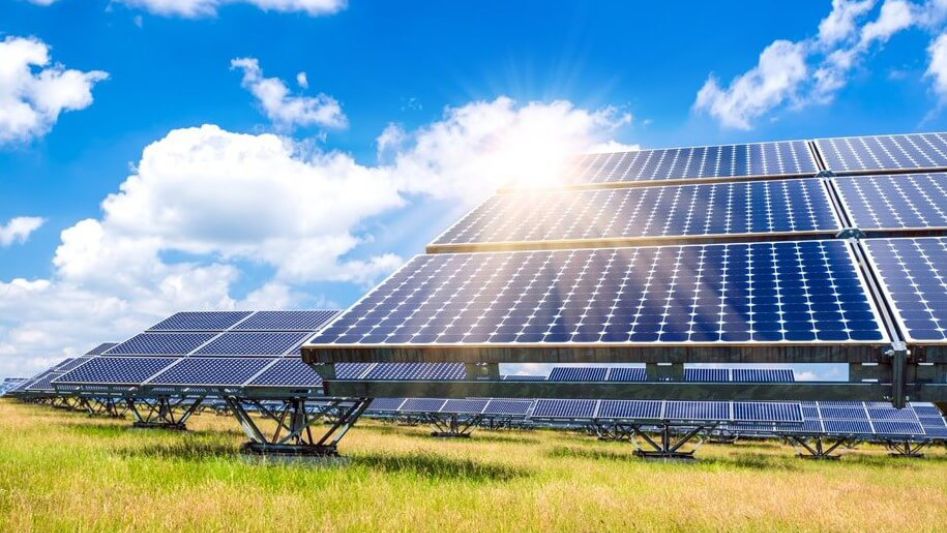
When we speak about solar energy, we are referring to the process of catching the light from the sun, which are called photons, and turning it into electricity, which is referred to as “the photovoltaic effect,” or PV for short. Solar energy that is collected using PV technology may be used to power a wide variety of devices, including houses, companies, automobiles, airplanes, and even more modest electronics such as calculators and portable power stations.
By the year 2020, the total installed solar capacity in the United States will have reached 97.7 gigawatts (GW). That’s enough energy to provide almost 17.7 million households with electricity!
The sun is the source of the vast majority of the energy that is available in our solar system. Without it, we would be nothing more than a lifeless rock wandering aimlessly through space. But to what extent does the sun’s power extend? According to the National Renewable Energy Laboratory (NREL) findings in the United States, the quantity of energy from sunlight that strikes the Earth in only one hour is sufficient to meet the requirements for a full year’s worth of energy consumption throughout the globe! That carries a lot of weight.
Solar energy has been one of the sources of new energy with the greatest growth rate in the globe for a number of years at this point. By the year 2020, the total installed solar capacity in the United States will have reached 97.7 gigawatts (GW). That’s enough energy to provide almost 17.7 million households with electricity! In addition, the price of solar energy continues to drop due to developments in related technologies, the lowering of associated material costs, and rising levels of consumer demand. This implies that installing rooftop solar panels now makes financial sense for a lot of houses and may yield savings over the long run.
By purchasing a solar energy plan from Green Mountain Energy, you can demonstrate your dedication to living a life powered by clean, renewable energy.
Is solar energy renewable or nonrenewable?
Energy that originates from a source that is capable of spontaneously replenishing itself on a period relevant to humans is referred to as renewable energy. To put it simply, we won’t have to worry about the sun disappearing for a very, very, very long time. And as long as the sun is shining, we may harness its power to light, heat, and cool our homes and businesses without contributing to the degradation of our priceless planet via carbon dioxide (CO2) production.
How does solar energy work?

PV cells in a solar panel are able to take in the sun’s rays and convert them into usable energy when the sun illuminates the panel. This energy results in the creation of electrical charges, which then move as a reaction to an internal electrical field inside the cell, which in turn results in the flow of electricity.
This is the scientific explanation for solar energy. First, a little look back in time.
In 1839, a French scientist named Alexandre-Edmond Becquerel discovered the photovoltaic effect, which turns sunlight into electricity. Despite the fact that people have been using solar energy since the beginning of time to light fires and keep their houses warm, we didn’t start to comprehend how solar energy worked until 1839. In the year 1964, an American inventor named Charles Fritts created the first rooftop solar array in the world. He did this by applying a selenium coating on panels in order to generate an electric current. However, Albert Einstein in 1905 contributed significantly to our understanding of how precisely light generates the energy that can be captured and used to make electricity. The paper that Einstein wrote fundamentally shifted how scientists think about light at the time. In addition, he was awarded the Nobel Prize, which is often regarded as a prestigious honor.
The United States government initiated the development of modern photovoltaic technology in the 1950s and 1960s so that it might be used in the nation’s space program. After the launch of the Vanguard I spacecraft in 1958, which was the first spacecraft to use solar panels, PV solar panels have been an essential component of satellites and other spacefaring vehicles ever since then.
How does a solar panel work?
In many ways, the modern solar panel can be compared to Fritts’ solar array, which was developed in the 19th century. However, in today’s solar panels, solar energy is captured through silicon solar cells, which are significantly more effective and capable of producing a great deal more electricity. However, in order to utilize that energy to power our life, we need to change it from direct current (DC) power to alternating current (AC) power. This conversion takes place in a transformer. In order to do this, the solar panel must be connected to a piece of equipment known as an inverter. This device converts the power from DC to AC. Solar energy is used to create clean power, which is then transported to other locations, such as homes and companies, where it is used.
How we use solar energy today
A solar array is the term given to the structure that is created when several solar panels are linked together. The greater the number of panels you install, the more electricity you will produce. And depending on the size of your array, the solar energy that you harvest may be used in one of three settings: the utility sector, the business sector, or the home sector.
Utility solar farms
Solar power facilities that are on a utility size provide enormous quantities of energy to the national electric grid, which may then be used in homes and businesses all around the country. Today, the median solar energy plant produces as much power as the average small- to medium-sized coal and fossil fuel plant. However, as photovoltaic (PV) technology continues to advance and become less costly, it is anticipated that future solar power plants will be able to produce the same amount of energy as the largest power plants in our country.
Commercial solar
Solar farms designed for commercial use are often scaled down versions of utility-scale systems. In order to supply energy to the companies that inhabit the buildings owned by commercial property owners, they are often put on unused land, roofs, and parking structures. If the weather is favorable and the commercial solar installation is large enough, the company may even produce more solar energy than they use on any given day, which they are then able to sell to the local utility company. This scenario is contingent on the size of the installation.
Residential solar
Are you considering installing your own solar panel directly on top of your roof? If you accomplish so, you’ll be one of the more than 2 million residences in the United States who produce their own solar electricity via residential systems. Solar energy generated by residential rooftop systems is used to power individual households. They are linked to the grid and may sell any excess power they produce back to the utility company or business. This is also the case with commercial and utility solar arrays. As a result of the fact that homeowners frequently augment the solar power production at their homes with conventional electricity in order to satisfy their energy demands, the electricity that homeowners send back to the grid during the night or on cloudy days is typically traded for bill credits. The use of domestic solar power as a source of renewable energy is gaining popularity at a rapid rate, thanks in large part to the declining costs associated with its installation.
How much does solar energy cost?
There are many reasons why the price of solar energy is continuing to drop, despite the fact that prices vary from state to state and from commercial to domestic applications. To begin, the cost of the raw materials that are utilized in the production of solar arrays is decreasing as new technologies are developed. At the same time, consumer demand is growing due to an increase in the number of individuals who are becoming aware of the positive effects solar energy has on the environment.
These trends are not lost on governments at any level, and as a result, they are investing in solar energy by providing financial rebates and tax credits to residential and commercial properties that install solar panels. For instance, thanks to the federal solar tax credit, sometimes referred to as the investment tax credit (ITC), the price of installing a solar energy system in a business or residential building may be reduced by up to thirty percent.
Utility-scale solar farms may deliver 100% clean and sustainable solar energy to any house or company in exchange for renewable energy certificates. This option is ideal for customers who do not want to establish their own solar power systems (RECs).
What are the benefits of solar energy?
- Clean and good for the Earth
- More affordable to produce
- Good for the economy
- Profitable
- A domestic energy source
- Good for business
- Sustainable
Choose a solar energy plan with Green Mountain Energy.

If you decide to go with one of our plans that is powered entirely by the sun, you will be contributing to creating a brighter and more environmentally friendly future for your town and the whole globe. We provide a variety of solar energy programs that may satisfy your need for power without requiring the installation of even a single solar panel, as well as environmentally friendly tools and add-ons that can assist you in reducing your carbon footprint even further.
